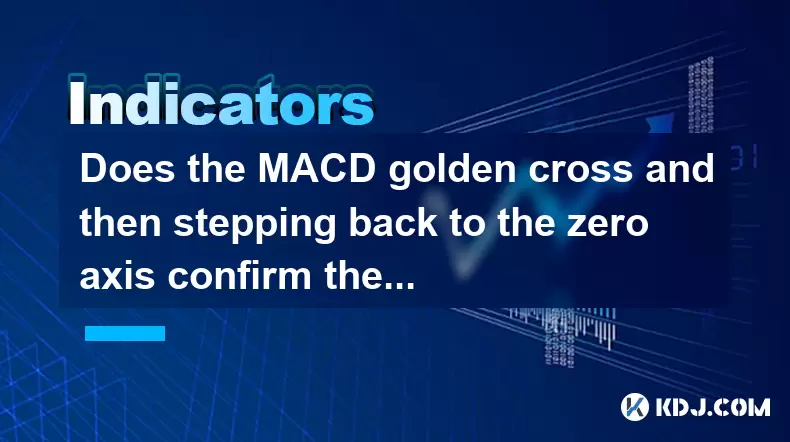-
 Bitcoin
Bitcoin $111,259.5910
2.32% -
 Ethereum
Ethereum $2,789.1977
6.17% -
 Tether USDt
Tether USDt $1.0006
0.06% -
 XRP
XRP $2.4172
3.88% -
 BNB
BNB $671.6585
1.21% -
 Solana
Solana $157.1336
2.90% -
 USDC
USDC $1.0001
0.02% -
 TRON
TRON $0.2913
1.52% -
 Dogecoin
Dogecoin $0.1809
5.04% -
 Cardano
Cardano $0.6213
4.40% -
 Hyperliquid
Hyperliquid $41.7572
6.29% -
 Sui
Sui $3.1623
8.35% -
 Bitcoin Cash
Bitcoin Cash $513.7819
1.17% -
 Chainlink
Chainlink $14.2966
1.64% -
 Stellar
Stellar $0.2904
9.82% -
 UNUS SED LEO
UNUS SED LEO $8.9624
-0.86% -
 Avalanche
Avalanche $19.4161
5.41% -
 Hedera
Hedera $0.1754
8.17% -
 Shiba Inu
Shiba Inu $0.0...01243
4.58% -
 Toncoin
Toncoin $2.8743
2.25% -
 Litecoin
Litecoin $90.6242
3.12% -
 Monero
Monero $328.7483
3.34% -
 Polkadot
Polkadot $3.6433
5.06% -
 Dai
Dai $1.0002
0.02% -
 Ethena USDe
Ethena USDe $1.0011
0.06% -
 Uniswap
Uniswap $8.3418
8.66% -
 Bitget Token
Bitget Token $4.4331
2.68% -
 Pepe
Pepe $0.0...01102
8.17% -
 Aave
Aave $297.1705
-0.69% -
 Pi
Pi $0.4712
1.31%
Does the MACD golden cross and then stepping back to the zero axis confirm the bullish signal?
A MACD golden cross followed by a zero-axis retest can signal bullish momentum in crypto, but confirmation through price action, volume, and other indicators is essential to avoid false signals.
Jun 29, 2025 at 05:36 pm

Understanding the MACD Indicator
The Moving Average Convergence Divergence (MACD) is a popular technical analysis tool used in trading, including cryptocurrency markets. It consists of three components: the MACD line, the signal line, and the MACD histogram. The MACD line is derived by subtracting the 26-period Exponential Moving Average (EMA) from the 12-period EMA. The signal line is typically a 9-period EMA of the MACD line. The histogram represents the difference between the MACD line and the signal line.
In the context of cryptocurrency trading, where volatility is high, understanding how to interpret these elements becomes crucial for identifying potential trend reversals or continuations.
What Is a Golden Cross in MACD?
A golden cross occurs when the MACD line crosses above the signal line, indicating a potential bullish trend. This crossover suggests that upward momentum is increasing, and traders often view this as a buy signal. In fast-moving crypto markets, such signals can provide timely entry points if interpreted correctly.
However, relying solely on the golden cross without additional confirmation can lead to false positives, especially during sideways or choppy market conditions. Traders should look for confluence with other indicators or price action patterns before making decisions.
Stepping Back to the Zero Axis: What Does It Mean?
After a golden cross, if the MACD line steps back toward the zero axis, it indicates that the momentum behind the bullish move may be weakening temporarily. The zero axis acts as a centerline — values above it suggest bullish momentum, while values below indicate bearish pressure.
When the MACD line pulls back to the zero line after a golden cross, it may signify consolidation rather than a reversal. Some traders interpret this as a sign that the uptrend is still intact but taking a pause. If the MACD line does not fall below zero and quickly resumes its upward trajectory, it could reaffirm the initial bullish signal.
How to Confirm the Bullish Signal Using MACD
To determine whether the combination of a MACD golden cross followed by a retest of the zero axis confirms a bullish signal, traders should consider the following steps:
- Observe the Price Action: Look for higher lows forming on the candlestick chart that align with the MACD behavior. A bullish pattern like a hammer or engulfing candle during the pullback can strengthen the case.
- Check Volume Levels: Increased volume during the golden cross and stable or slightly reduced volume during the zero-axis retest can support the idea of healthy consolidation.
- Use Other Indicators for Confirmation: Tools like Relative Strength Index (RSI) or Bollinger Bands can help validate the strength of the trend. For example, RSI staying above 50 during the pullback suggests underlying bullishness.
- Analyze Timeframes: Cross-check the MACD signal across multiple timeframes. A golden cross on the daily chart accompanied by a zero-axis touch on the 4-hour chart might offer stronger confirmation.
- Watch for Breakouts: If the price breaks above a recent resistance level after the MACD line resumes its upward movement, it can serve as a strong bullish continuation signal.
Each of these checks provides a layer of validation to ensure that the trader isn’t acting on a false signal generated during a ranging market phase.
Potential Pitfalls and Misinterpretations
One common mistake among novice traders is treating the MACD golden cross alone as a definitive buy signal. In reality, it's possible to encounter false signals, particularly in overbought conditions or during periods of low volume. Similarly, a return to the zero axis doesn't always confirm continued bullish momentum — sometimes it precedes a full reversal.
Another pitfall involves ignoring divergences. For instance, if the price makes a new high but the MACD fails to do so, it could signal weakening momentum even if the MACD line remains above the signal line.
Additionally, using default MACD settings may not suit all cryptocurrencies due to varying levels of volatility. Adjusting the period lengths (e.g., shortening the EMAs) might yield more accurate readings for certain assets.
FAQs
Q: Can the MACD golden cross and zero-axis retest work effectively in altcoin trading?
A: Yes, but altcoins tend to be more volatile and less liquid than major cryptocurrencies like Bitcoin or Ethereum. This means that false signals are more frequent, and traders must apply stricter filters or combine the MACD with volume analysis or order book data for better accuracy.
Q: Should I enter a trade immediately after the MACD golden cross occurs?
A: Immediate entry carries risks, especially if the price lacks supporting volume or is approaching a key resistance zone. Waiting for the MACD line to stabilize near the zero axis and observing how price reacts at critical levels can improve your timing and reduce exposure to false breakouts.
Q: How reliable is the zero-axis retest compared to other MACD-based strategies?
A: The reliability depends heavily on market context. In trending markets, the zero-axis retest can serve as a solid continuation signal. However, in ranging or consolidating markets, it may frequently mislead traders. Always evaluate broader market sentiment before relying on this setup.
Q: Can I use the MACD golden cross and zero-axis retest in automated trading systems?
A: Yes, many algorithmic trading platforms allow you to code MACD-based strategies. However, ensure that your system includes additional parameters like volume thresholds or volatility filters to avoid executing trades based on weak signals.
Disclaimer:info@kdj.com
The information provided is not trading advice. kdj.com does not assume any responsibility for any investments made based on the information provided in this article. Cryptocurrencies are highly volatile and it is highly recommended that you invest with caution after thorough research!
If you believe that the content used on this website infringes your copyright, please contact us immediately (info@kdj.com) and we will delete it promptly.
- XRP Ledger's EVM Sidechain: TVL Surge, Institutional Adoption, and the Future of RLUSD
- 2025-07-10 20:30:12
- BLOS Token, Blossom Fund, and Your Stock Portfolio: A New Era of Investing
- 2025-07-10 20:50:12
- Aptos, Wyoming Stablecoin, and Technical Analysis: Bullish Signals Ahead?
- 2025-07-10 21:10:12
- Uzbekistan's Tokenized Government Bonds: A New Frontier in Finance
- 2025-07-10 21:10:12
- Hedera (HBAR), SEI, BlockDAG: Decoding the Crypto Landscape of 2025
- 2025-07-10 21:15:12
- Justin Sun, TRX, and Dual-Profit: Decoding the Latest Crypto Moves
- 2025-07-10 21:15:12
Related knowledge

How to trade Dogecoin based on funding rates and open interest
Jul 07,2025 at 02:49am
Understanding Funding Rates in Dogecoin TradingFunding rates are periodic payments made to either long or short traders depending on the prevailing ma...

What is the 'God Mode' indicator for Bitcoincoin
Jul 07,2025 at 04:42pm
Understanding the 'God Mode' IndicatorThe 'God Mode' indicator is a term that has emerged within cryptocurrency trading communities, particularly thos...

Using Gann Fans on the Dogecoin price chart
Jul 07,2025 at 09:43pm
Understanding Gann Fans and Their Relevance in Cryptocurrency TradingGann Fans are a technical analysis tool developed by W.D. Gann, a renowned trader...

How to spot manipulation on the Dogecoin chart
Jul 06,2025 at 12:35pm
Understanding the Basics of Chart ManipulationChart manipulation in the cryptocurrency space, particularly with Dogecoin, refers to artificial price m...

Bitcoincoin market structure break explained
Jul 07,2025 at 02:51am
Understanding the Dogecoin Market StructureDogecoin, initially created as a meme-based cryptocurrency, has evolved into a significant player in the cr...

How to backtest a Dogecoin moving average strategy
Jul 08,2025 at 04:50am
What is a Moving Average Strategy in Cryptocurrency Trading?A moving average strategy is one of the most commonly used technical analysis tools in cry...

How to trade Dogecoin based on funding rates and open interest
Jul 07,2025 at 02:49am
Understanding Funding Rates in Dogecoin TradingFunding rates are periodic payments made to either long or short traders depending on the prevailing ma...

What is the 'God Mode' indicator for Bitcoincoin
Jul 07,2025 at 04:42pm
Understanding the 'God Mode' IndicatorThe 'God Mode' indicator is a term that has emerged within cryptocurrency trading communities, particularly thos...

Using Gann Fans on the Dogecoin price chart
Jul 07,2025 at 09:43pm
Understanding Gann Fans and Their Relevance in Cryptocurrency TradingGann Fans are a technical analysis tool developed by W.D. Gann, a renowned trader...

How to spot manipulation on the Dogecoin chart
Jul 06,2025 at 12:35pm
Understanding the Basics of Chart ManipulationChart manipulation in the cryptocurrency space, particularly with Dogecoin, refers to artificial price m...

Bitcoincoin market structure break explained
Jul 07,2025 at 02:51am
Understanding the Dogecoin Market StructureDogecoin, initially created as a meme-based cryptocurrency, has evolved into a significant player in the cr...

How to backtest a Dogecoin moving average strategy
Jul 08,2025 at 04:50am
What is a Moving Average Strategy in Cryptocurrency Trading?A moving average strategy is one of the most commonly used technical analysis tools in cry...
See all articles


























![Bitcoin is about to plummet and get 9-7W long-term short orders [Chainblade’s latest market BTC technical analysis] July 10, 2025 Bitcoin is about to plummet and get 9-7W long-term short orders [Chainblade’s latest market BTC technical analysis] July 10, 2025](/uploads/2025/07/10/cryptocurrencies-news/videos/bitcoin-plummet-w-term-short-chainblade-market-btc-technical-analysis-july/686f8f4c58e52_image_120_90.webp)






























































